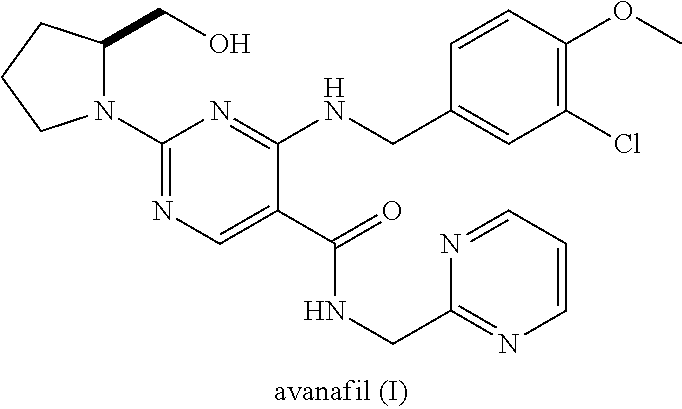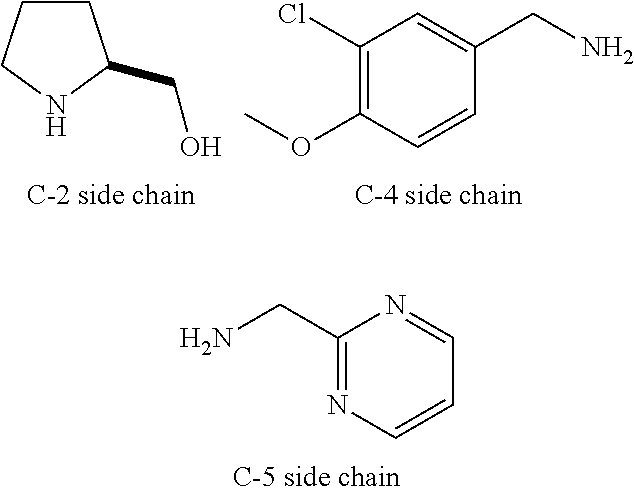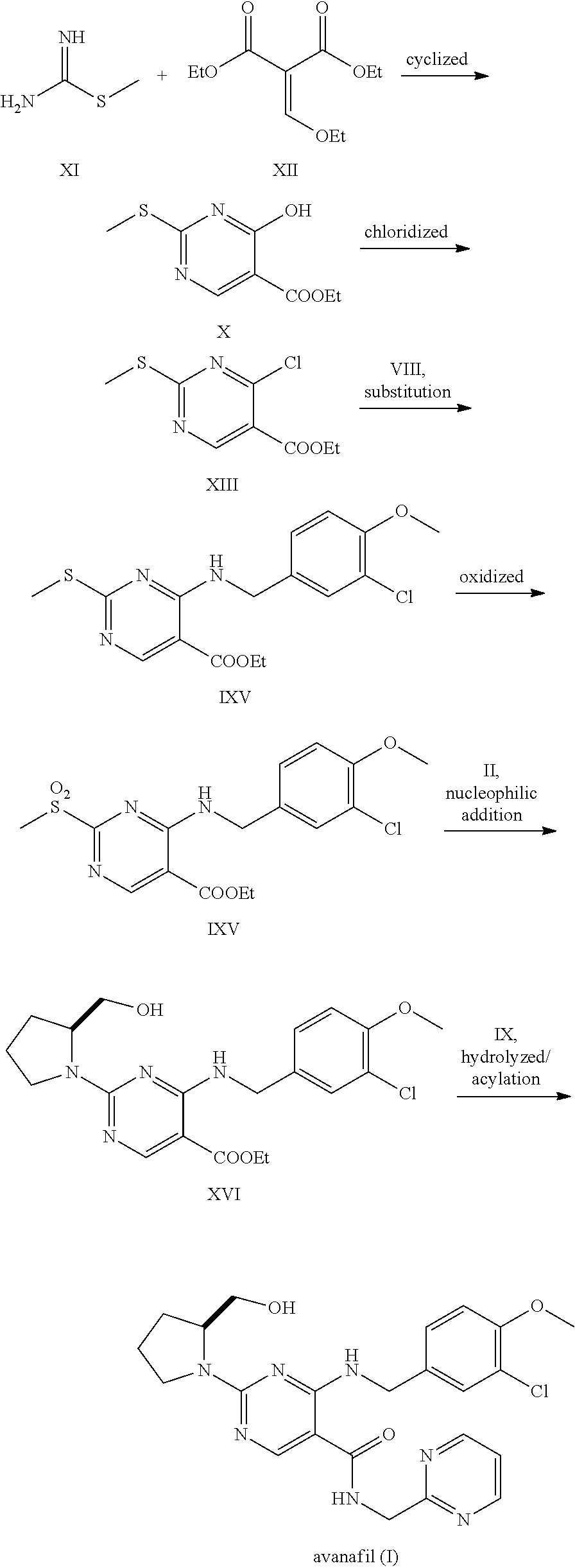Avanafil preparation method
a preparation method and avanafil technology, applied in the field of preparing avanafil, can solve the problems of difficult to achieve industrialization for the whole synthetic rou
- Summary
- Abstract
- Description
- Claims
- Application Information
AI Technical Summary
Benefits of technology
Problems solved by technology
Method used
Image
Examples
embodiment i
[0033]2.22 g of cytosine (20 mmol), 2.0 g of triethylamine (20 mmol), 0.2 g of potassium iodide (1% eq) and 50 mL of anhydrous ethanol were added to a three-necked flask, heated to 50-55° C. and stirred until dissolved to a homogeneous system. 5.60 g of 3-chloro-4-methoxy-benzyl bromide (III) (24 mol) solution was added dropwise to the reaction solution slowly, then heated to 80° C. to continue 3 hours, then the reaction ended with the TLC monitoring. The mixture was cooled down to room temperature, and filtered to remove triethylamine hydrobromide. The filtrate was adjusted to pH 4-5 with hydrochloric acid. Ethanol was recovered under the reduced pressure and residue was recrystallized using ethyl acetate to get 4.78 g off-white solid N-(3-chloro-4-methoxybenzyl) cytosine (V) 4.78 g, with the yield of 90.2%.
embodiment ii
[0034]With the protection of nitrogen, 2.65 g of N-(3-chloro-4-methoxybenzyl) cytosine (V) (10 mmol), 6.63 g of benzotriazol-1-yloxytris (dimethylamino)-phosphonium hexafluorophosphate (BOP) (15 mmol) and 50 mL of acetonitrile were added to a three-necked flask. The 1,8-diazabicyclo[5.4.0] undec-7-ene (DBU) (2.28 g, 15 mmol) solution was added dropwise while stirring, and reacted 12 hours at room temperature; then heated to 60° C. for reaction 12 hours. The solvent was removed by distillation under reduced pressure, then added to 100 mL ethyl acetate to dissolve, and washed with 20 mL of 2M sodium hydroxide. The organic phase was separated, dried and concentrated under reduced pressure, then the residue was dissolved in 100 mL of tetrahydrofuran, added with S-hydroxymethyl pyrrolidine (II) (1.31 g, 13 mmol) and sodium hydride (0.32 g, 13 mmol), heated to 55° C. and stirred for reaction for 5 hours, then the reaction ended with the TLC monitoring. After quenching with saturated brine...
embodiment iii
[0035]1.74 g of 4-[(3-chloro-4-methoxybenzyl)amino]-2[2-(hydroxymethyl)-1-pyrrolidinyl]pyrimidine (VI) (5 mmol), 0.94 g of liquid bromine (6 mmol) and 25 mL of 2.0M sodium hydroxide solution were added to a microwave reactor for 200 W microwave irradiation for 5 min, cooled down to room temperature, to separate out the white solid; after filtered and dried, added with 25 mL of ethylene glycol dimethyl ether for dissolution and transferred to a three-necked flask. 13 mg of nickel acetate tetrahydrate (0.05 mmol), 32 mg of tris (2,4-di-t-butyl) phenoxy phosphazene (0.05 mmol), 0.54 g of sodium methoxide (10 mmol) and 2.05 g of N-(2-methylpyrimidine) methanamide (IV) (15 mmol) were added, and heated to 120° C. and stirred for reaction for 10 hours under the protection of nitrogen, then the reaction ended with the TLC monitoring. The reaction solution was poured into 25 mL of saturated ammonium chloride solution, extracted three times with ethyl acetate. The organic phase was combined a...
PUM
 Login to View More
Login to View More Abstract
Description
Claims
Application Information
 Login to View More
Login to View More - R&D
- Intellectual Property
- Life Sciences
- Materials
- Tech Scout
- Unparalleled Data Quality
- Higher Quality Content
- 60% Fewer Hallucinations
Browse by: Latest US Patents, China's latest patents, Technical Efficacy Thesaurus, Application Domain, Technology Topic, Popular Technical Reports.
© 2025 PatSnap. All rights reserved.Legal|Privacy policy|Modern Slavery Act Transparency Statement|Sitemap|About US| Contact US: help@patsnap.com



